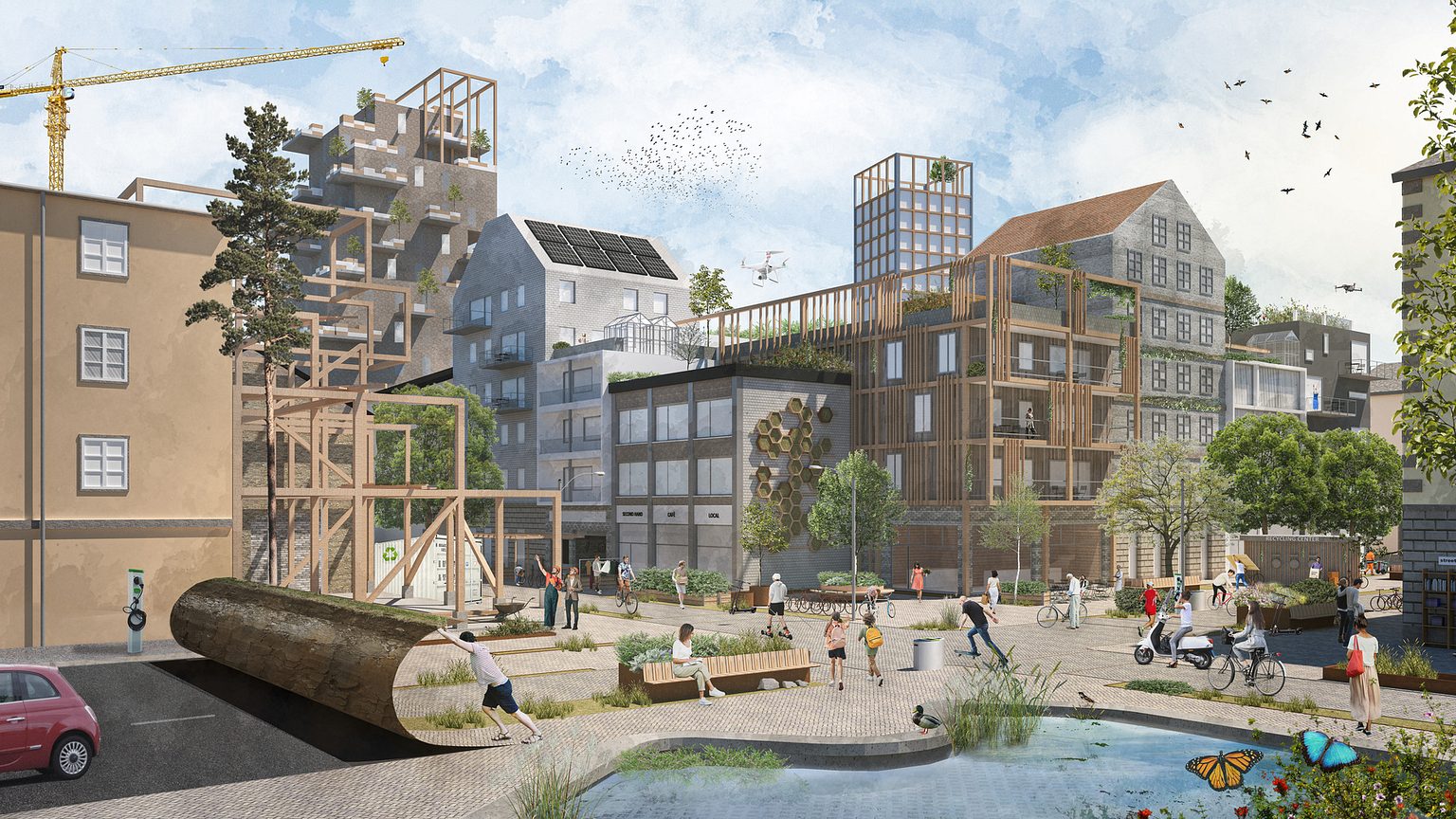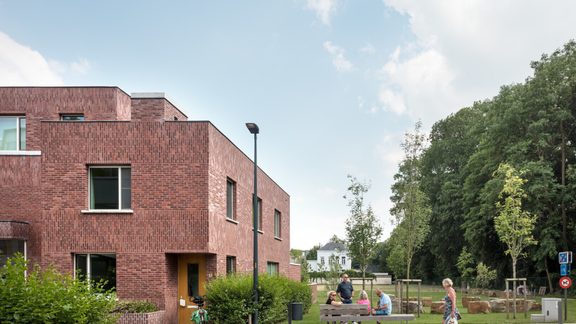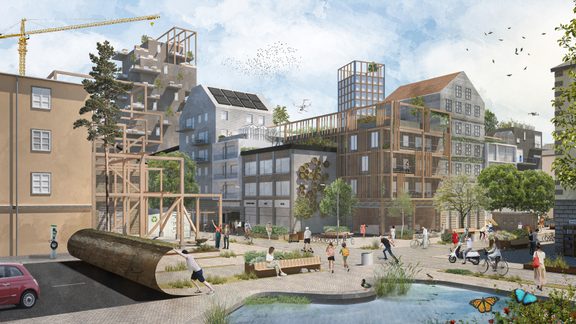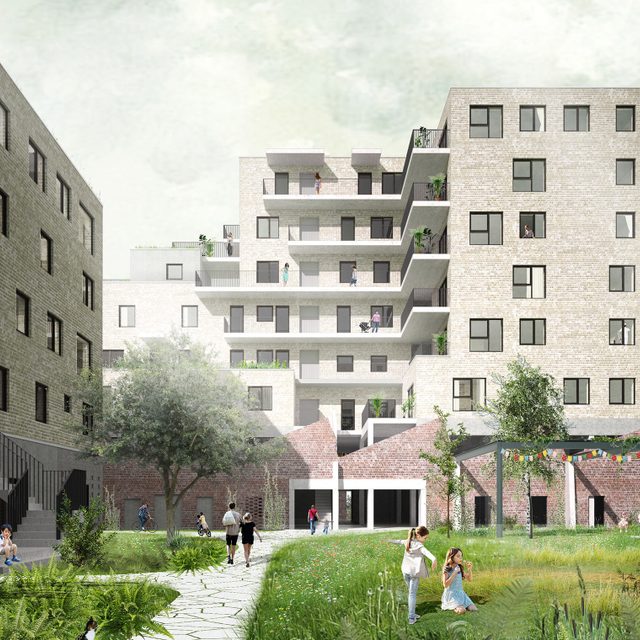
Proximity is the best type of mobility
About
As population growth is showing no signs of slowing down, energy and space are increasingly at a premium. At the same time, we need to make sure that people can continue to move around in a safe and sustainable way. Given these conflicting interests, it is vital that we think carefully about sustainable mobility.

© Stijn Bollaert
At Sweco this is a topic that crops up on a daily basis: how do we keep our cities liveable, while making sure that people can continue to move around them in a safe and sustainable way?
The solution is "sustainable mobility", according to Project Manager Ward Ronse. "All too often, people think about sustainable mobility from the perspective of climate change, but there is so much more to it. It's about people being able to move around safely, in a liveable city that offers high-quality housing. At the same time, residents in that city should experience as little congestion and traffic noise as possible, and air pollution should be reduced to a minimum."
The way in which we approach mobility today is often rooted in the way we thought about this issue in the 1960s and 1970s, Ward explains. "These two decades were crucial, as a huge amount of construction took place and lots of infrastructure projects were completed. The only problem is that the car was king back then, and that meant asphalt everywhere. We're still carrying the consequences of that as we speak, but fortunately, our mindset couldn't be more different today. Even so, the unfortunate thing is that in urban planning, a complete transformation of this type is not something you can achieve in an instant. Instead, it takes a long-term effort — decades, even."

A few aspects have already come to the fore to make sustainable mobility a highly pertinent topic today. Our ever-expanding spatial footprint, which needs to be scaled back, is one of those. Health is another. "Healthy traffic and safe traffic go hand in hand, of course, but we also know that active travel (by bike or on foot) delivers a major contribution to a healthier population, for example. Another aspect is the electrification of our cars; an area in which we've already come a long way, and a trend that will only accelerate over the coming years. Sure, getting everyone in an electric car won't solve our problems, but it does force us to think about charging infrastructure, for example. Where can we best place charging points? Is it a good idea to place them in residential areas, where they might attract a lot of traffic? Or is that the wrong option? And how can we help people use energy in smarter ways?"
The fact that we urgently need to adapt our infrastructure in line with the latest insights means that Ward and his colleagues need to turn their attention to how we will move around in the future. "What will traffic look like in 2040, say? No one can predict the future, of course, but that doesn't take away the fact we need to start thinking about where tramlines might go, for example. Or bicycle highways. And how much space to keep aside for cars. We're already witnessing a trend of individual car ownership making way for shared subscription plans. Young people in particular are completely on board with that. Another aspect to take into consideration is the mobility chain. We leave our homes on our bikes, cycle to the station, before travelling the final stretch to work on a rental scooter. This kind of thing only works when the entire process is smooth, comfortable and easy: there need to be plenty of bikes and scooters available, for example, and the cycling and walking routes to and from the station need to be attractive and safe."

All these driving forces clearly show that space and mobility are inextricably linked, Ward surmises. "Concepts such as the '15-minute city' demonstrate that proximity remains the best form of mobility. All the things you need in your everyday life should ideally be available within a 15-minute walk or bike ride from your home. It's obvious that people are more likely to walk to their local bakery if it's just 500 metres away, instead of five kilometres. In the latter case, they're more likely to hop in the car. Longer distances also place greater demands on energy and infrastructure. Attractive neighbourhoods where home, work and education are as close as possible to one another also play a role in this. To some people, this brings to mind an ominous image of the big metropolis, but there is no need for that to be the case: it's perfectly possible to realise this ideal in a smaller community or city."
In any case, the good news is that policymakers are coming around to this vision in their droves. "That's absolutely the case: public officials and mayors often no longer need convincing, and citizens are increasingly getting on board with the story as well. Even so, there's a huge amount of work still to be done, and as such, it is essential that we generate broad public support and raise awareness. Participation is a crucial aspect in every single one of our projects."
Source: Focus – Le Vif
Other interesting articles

Creating a Sustainable Future: The Role of Biodiversity on International Biodiversity Day

FPC Risk Nominated for FireForum Award
